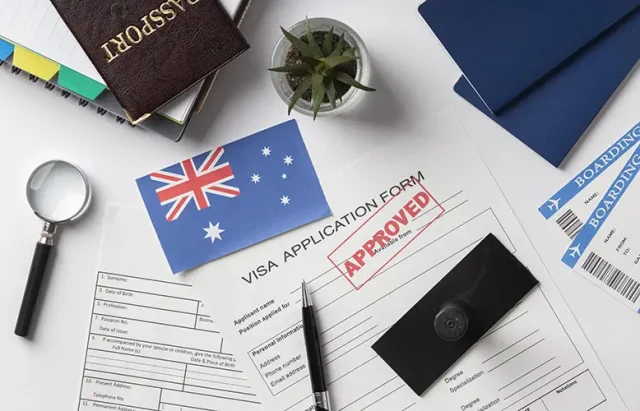
Navigating the Australian immigration process can be challenging. Learning about the Partner 309 Visa may help those who are planning to move to Australia with their partners. This is a provisional visa for anyone who is overseas and wants to live with their partner. For many couples, this visa plays an essential role in securing permanent residency. This article will explain the process, evidence required, and application stages of the provisional partner visa.
Understanding the Process
Applicants for a Partner 309 Visa must be outside Australia when they apply. Incomplete applications may hold up the process, so you must be extensive and thorough in your preparation, ensuring all forms are complete and you have all required documents.
The applicant must meet some eligibility requirements. They must be a spouse or de facto partner of an Australian citizen, an Australian permanent resident, or an eligible New Zealand citizen. Couples must show a mutual commitment to a shared life instead of just living together as a process of convenience.
Gathering the Necessary Proof
Providing sufficient evidence to prove the authenticity of the relationship is one of the most crucial components of applying for a provisional partner visa. Documents showing joint financial obligations, such as bank accounts, loans, or a lease, can be used to meet this requirement. These documents highlight a certain degree of financial interdependence that comes with living a life together.
Furthermore, social proof such as pictures at family events or with mutual friends can also be used to depict an authentic relationship. Applicants can provide statutory declarations from friends or relatives stating that you are in a genuine relationship.
Progression to Permanent Residency
Once it is granted, the provisional partner visa allows you to remain in Australia until your permanent partner visa is processed. The 909 visa allows applicants to live, work, study, and access public health services. The processing time for a permanent (subclass 100) visa starts two years after you applied for the provisional and permanent partner visas.
You must continue to meet relationship requirements and remain the spouse or de facto partner of the same person who sponsored you for the provisional visa. Documenting this phase is essential. Proof of the ongoing nature of a relationship comes in the form of shared financial records and communication logs. The more up-to-date they are, the better.
Common Challenges and Tips
The application process for a provisional partner visa presents many challenges for applicants. Being aware of these possible roadblocks can help you while preparing to apply. In most cases, delays arise because the documentation is not complete or cannot be verified. Taking the time to ensure all information is complete and correct can prevent these problems.
A registered migration agent can also help you with your application. They can explain the application process and ensure you meet all requirements. Flexibility and patience are vital. The process takes time, and sometimes there are unexpected requests for more information. Staying organised and communicating with immigration officials can help you manage these challenges.
Maintaining the Relationship
Though it is a highly documentation-based process, having a healthy relationship is equally important. Open communication and mutual support should be the defining characteristics of a couple’s relationship. It allows them to continue to support each other in their new surroundings.
Transitional periods can be made easier by engaging in local communities and creating a support network. Getting involved with the locals and making new friends creates a feeling of belonging and allows couples to adapt much better to their new situation.
Conclusion
The Partner 309 Visa is one of the key elements for couples looking to establish a life together in Australia. Applicants can confidently navigate this process by understanding the eligibility requirements and providing extensive evidence. You may face some challenges, but being prepared, thorough, and patient, and seeking help when necessary, can help you overcome them.





